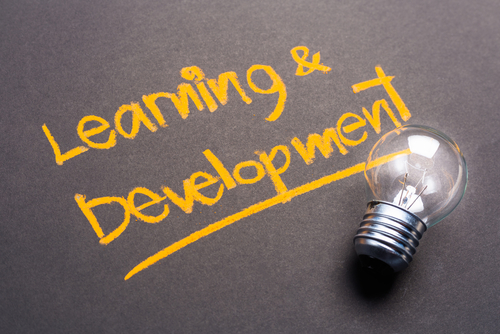Today, sales professionals are facing the barriers of inflation, heightened competition, a lack of high-quality leads, and longer deal cycles, with 54% saying their job was more difficult in 2023 than in previous years. These challenges can be overwhelming for sales professionals, leading to high levels of burnout and a decline in job performance, productivity, and engagement. In fact, the sales turnover rate hovers around 33%, three times the rate of other jobs in the United States.
One way organizations can mitigate this challenge is by investing in a learning and development (L&D) strategy that enables employees with the skills necessary to navigate the sales landscape effectively. By offering continuous training opportunities for both new and seasoned sales professionals, organizations can improve the retention and performance of their sales team, leading to elevated sales and revenue streams.
Developing an Effective L&D Strategy
Research shows that 87% of sales training is forgotten within a month, indicating a disconnect between what sales professionals need and the training they receive. To build an effective L&D strategy, it’s important to understand the lifecycle of a sales professional. Every stage of a sales career, from new hires to executive leaders, is different and has its own unique training needs and challenges.
New Hires: While all businesses have some form of an onboarding and new hire training process, they do not always produce the intended results. An efficient onboarding program can cut sales ramp-up time by 50%. Important focus areas for new hires include basic onboarding information, in-depth product and industry training, and organization-specific technical pitch and sales training to ensure each hire is familiar with the company’s sales process and cycle before speaking with customers. This may include training around which products are typically sold together, how to navigate objections, who the major competitors are and/or how to use a company’s mission and vision appropriately.
Early Career Sales Professionals: Since entry-level sales professionals do not have a foundation in the industry, their training materials should cover the technical aspects of their role, sales strategy, and soft skills around communication. It is also helpful to offer microlearning opportunities that provide a refresh when needed as well as mentorship or coaching opportunities.
Established Sales Professionals: Experienced sales professionals still require training. While it may not be as technical as the training delivered to entry-level professionals, it’s important to provide individualized opportunities that address any performance gaps and allow for career growth. Some different focuses may include adaptive selling training, cross-functional training, training to address technological innovation, and even manager-to-salesperson coaching.
Seasoned Sales Professionals: Seasoned sales professionals are experts in their field. And while they know how to sell a product like the back of their hand, they often require in-depth training to develop leadership and mentorship skills. Competitive refreshes and product differentiation also are critical training components for this group.
The Return on Investment (ROI) of L&D
L&D programs have proven to increase employee productivity, engagement, job satisfaction, and retention. 92% of employees with access to an effective L&D program report being more engaged with their work. Additionally, 45% of employees report that they would stay at a company longer if it invested in their personal career growth. This, in turn, positively impacts overall business performance.
When evaluating L&D’s impact on sales performance specifically, there are four key metrics that business leaders should consider:
- Sales team feedback: Employee feedback should be considered when evaluating any training program. Business leaders should ask employees if they found the resources and tools helpful or if they feel more confident and knowledgeable in their roles. This allows L&D professionals to identify areas for improvement and adjust as needed.
- Sales team productivity: One of the main goals of a sales training program is to increase the productivity and efficiency of sales teams. This may present itself as the ability to close deals faster, spend less time on administrative tasks, and better collaborate with team members.
- Sales performance: Another key way to evaluate the effectiveness of an L&D program is to compare sales results from before and after implementing the program. For example, business leaders should consider the number of deals closed and the amount of revenue generated, while also ensuring that enough time has passed since implementing the program to be able to calculate its ROI accurately.
- Competitive analysis: An analysis of competitor sales results can also serve as a tool to evaluate the effectiveness of an L&D program. A growth in awareness or gain in market share may be indicative of the program improving business performance.
An effective L&D program can maximize the potential of a sales team, directly impacting a business’s bottom line. By ensuring the program meets the unique needs of its sales team members and knowing how to measure success, business leaders are able to improve employee performance while also amplifying their revenue streams and producing high-quality sales results.
Jeff Griggs is Litmos’ Chief Revenue Officer. As a Silicon Valley sales veteran, Jeff Griggs has spent his career building highly scalable revenue-focused teams. Prior to Litmos, Jeff served as Chief Revenue Officer for Eightfold.ai and has over twenty years of high-growth experience with Salesforce, Oracle and Apttus. He has a successful track record of scaling and operationalizing SaaS businesses. He received his MBA from Northwestern University and an undergraduate degree from Michigan State University.

